|
|
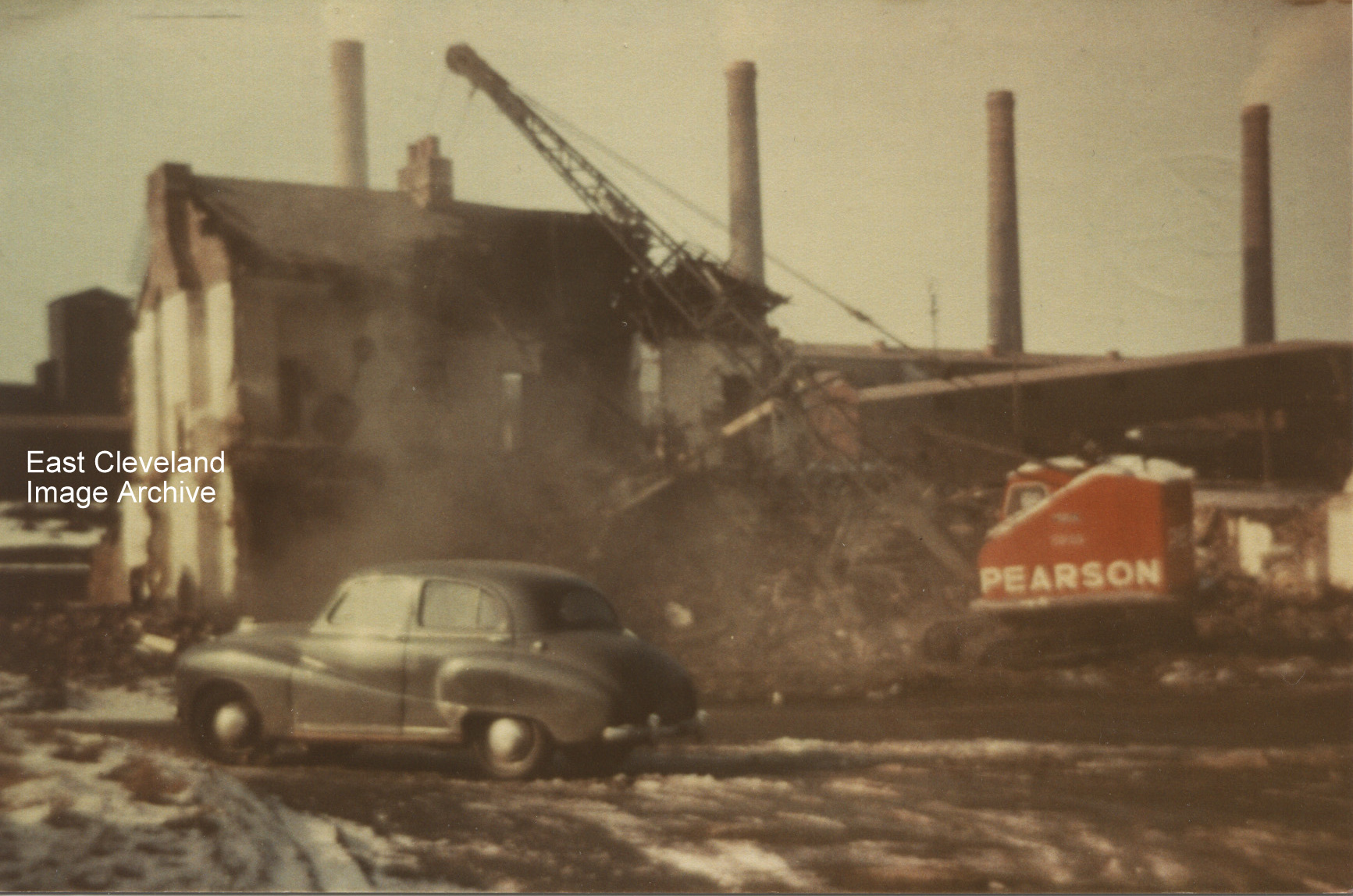
Another row of cottages falls in Carlin How, they were very near to the works. Rather a dangerous place to leave a car, don’t you think?
Fred Miller tells : “I was born at number one Front Street on 21st December 1937; later moved to 26 Westray Street. I have fond memories of ‘The Bottom End ‘Bonfire on the top common, playing in Hally Ballies. I still visit every year mostly to visit my old friend Peter Libby”.
Thanks to Fred Miller for that memory.
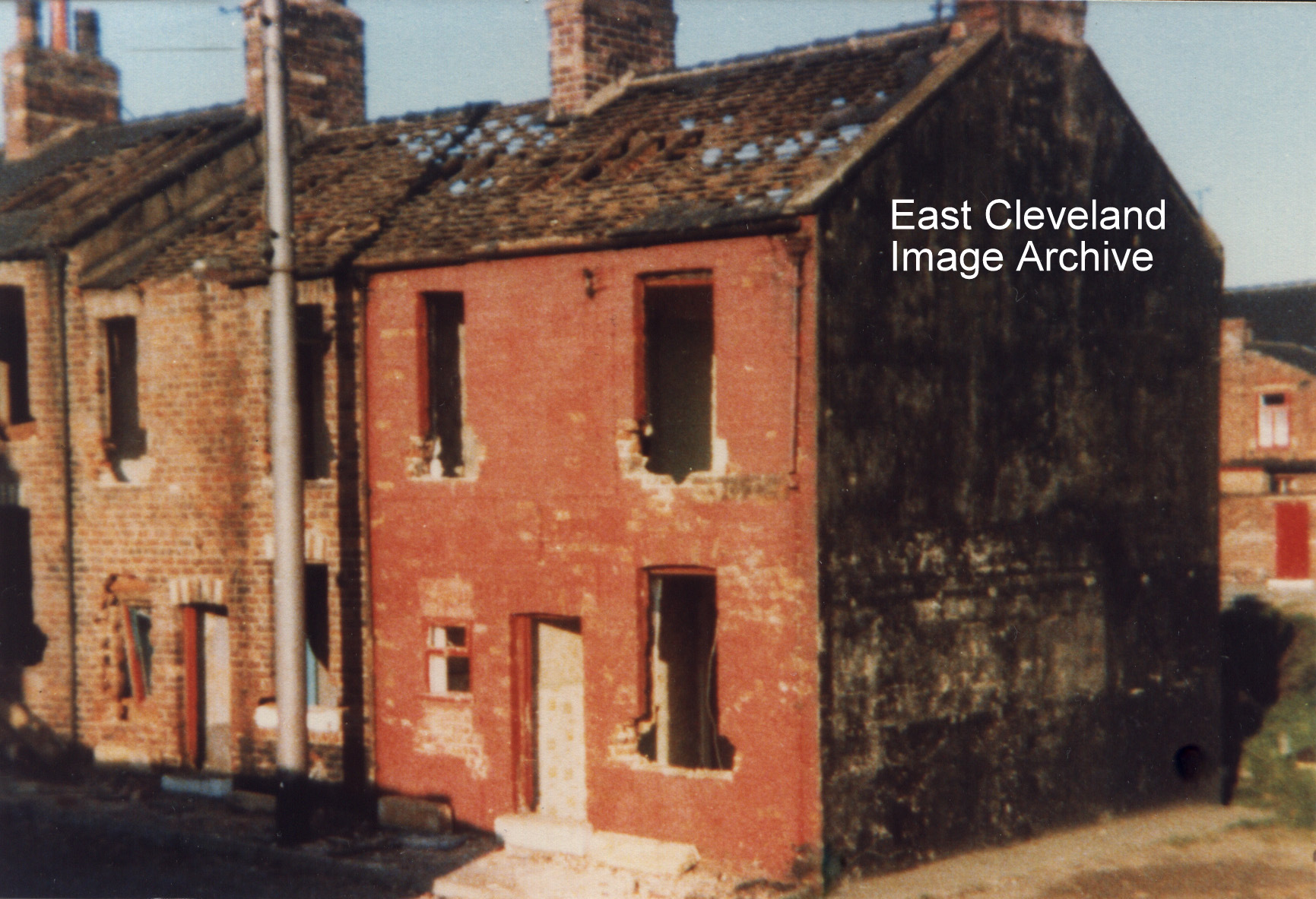
Hands up all those who remember Wood Street at Carlin How and for those who don’t, well it stood where the car park for the Working Men’s Club is now. This photograph shows the demolition of Mr Walter Womack’s and Mr Walter ‘Wally – Taxi’ Goldby’s houses. Alan Pearson tells us: ”I was born at 16 Wood Street and was always led to believe that it was the oldest street in Carlin How. From looking at census records; Wood Street, Dixon Street, Steavenson Street, Wesley Terrace, Railway Terrace and Bells Huts all appeared between 1871 and 1881. Nos 1-26 LIC (Lofthouse Iron Company) in 1881 became Long Row in 1891 and Wood Street in 1901. ‘Woodhouses’ in the 1881 Census became Wood Cottages, then Bells Huts in 1891 Census. 1-5 Carlin How Road became 1-5 Reading Room, then Wesley Terrace. However, in 1871 there were 2 houses listed as Carlin How Lodge (where were these?) and 36 un-named, unnumbered cottages. It seems likely that these were part of 1-56 Carlin How in 188; which became in 1901 Maynard Street, Front Street and The Square – so was one of these the oldest street in Carlin How?”. Derick Pearson also tells us: “I took this photograph, our family owned two houses in Wood Street at that time; number 21 and the one my sister lived at no 7. I lived there with my children up till around 1975. This photograph was taken some time after that; Taffy Williams from Lingdale was one of the demolition merchants and this was the start of the demolition”.
Lynn O’Neill commented: “I was born at 22 Wood Street in 1946. We moved to Loftus in 1948. I have not been back to this area for a long time.” Joy Merrett replied: “My great-grandparents, Robert and Lucy Glover lived here. He died in 1942 so perhaps your parents bought it from my family. I’d be interested to hear from you, especially if you have old pictures!”
Image courtesy of Derick Pearson; from a collection compiled by Derick Pearson (also information regarding the two houses shown), thanks to Alan Pearson, Derek Dobson, Derick Pearson, Lynn O’Neill and Joy Merrett for the updates.
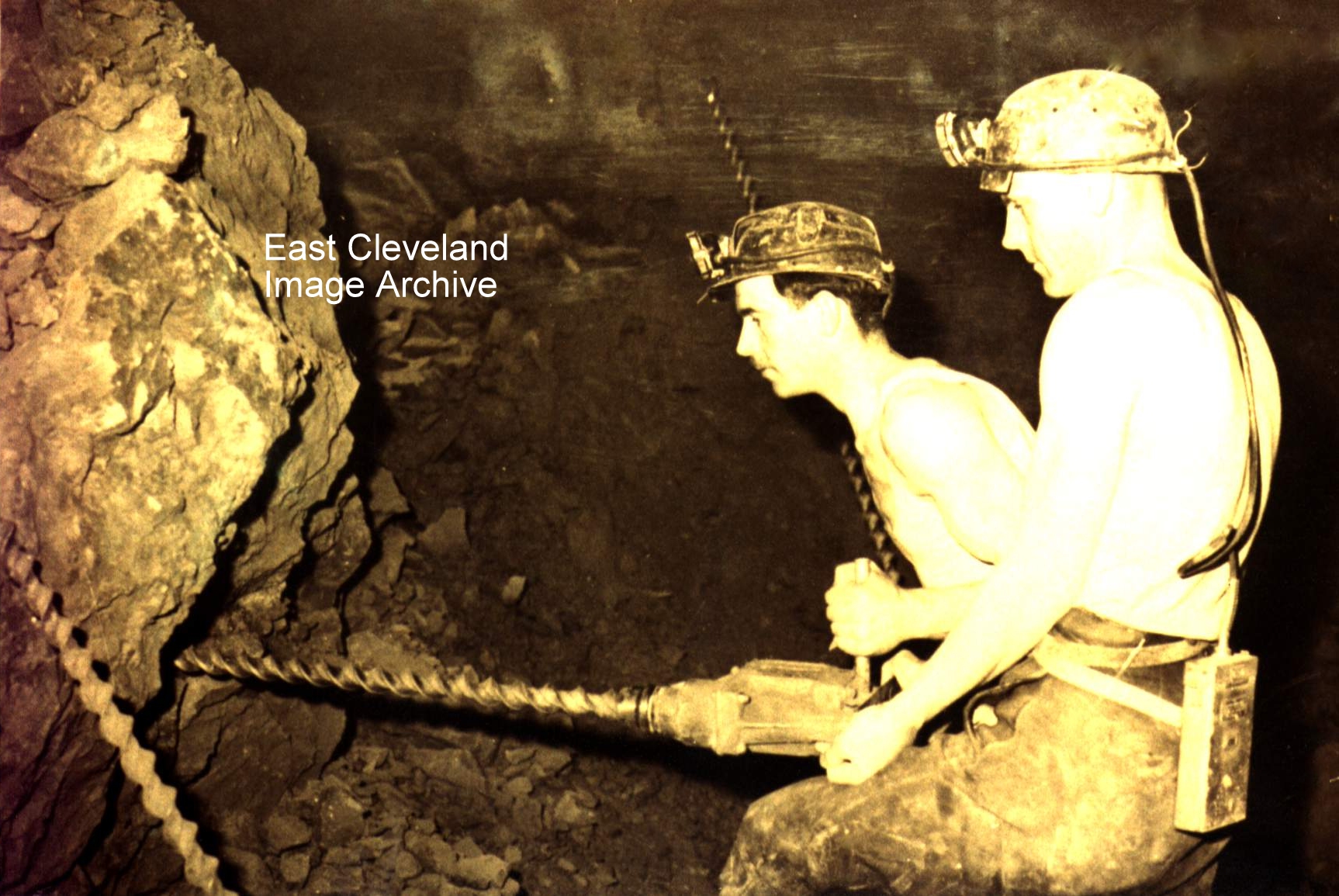
Pictured we have two of the ironstone miners undertaking a record-breaking venture of removing ironstone in a one week period: on the left is Dennis Pearson, with on the right George (Ducks) Hollingworth at Kilton B . This photograph was taken for the record breaking venture that took place in Kilton Pit in the early 1950s. One week of absolute dedication; to drill, shot fire, fill tubs and lead the stone.
The record breakers were Dennis Pearson from Carlin How (an ex-Lingdale lad), George Hollingworth from Lingdale, Stan Tremain from North Skelton, Septimus Bamborough from Carlin How and John Stonehouse ‘senior’ from Lingdale. North Skelton claimed to have beaten the record later but it was not recorded as they used more men in the venture and so the output of Stone per man was less. The Kilton record stood and mine manager Andrew Turnbull was justly proud of his men.
Thanks to Derick Pearson for the information.
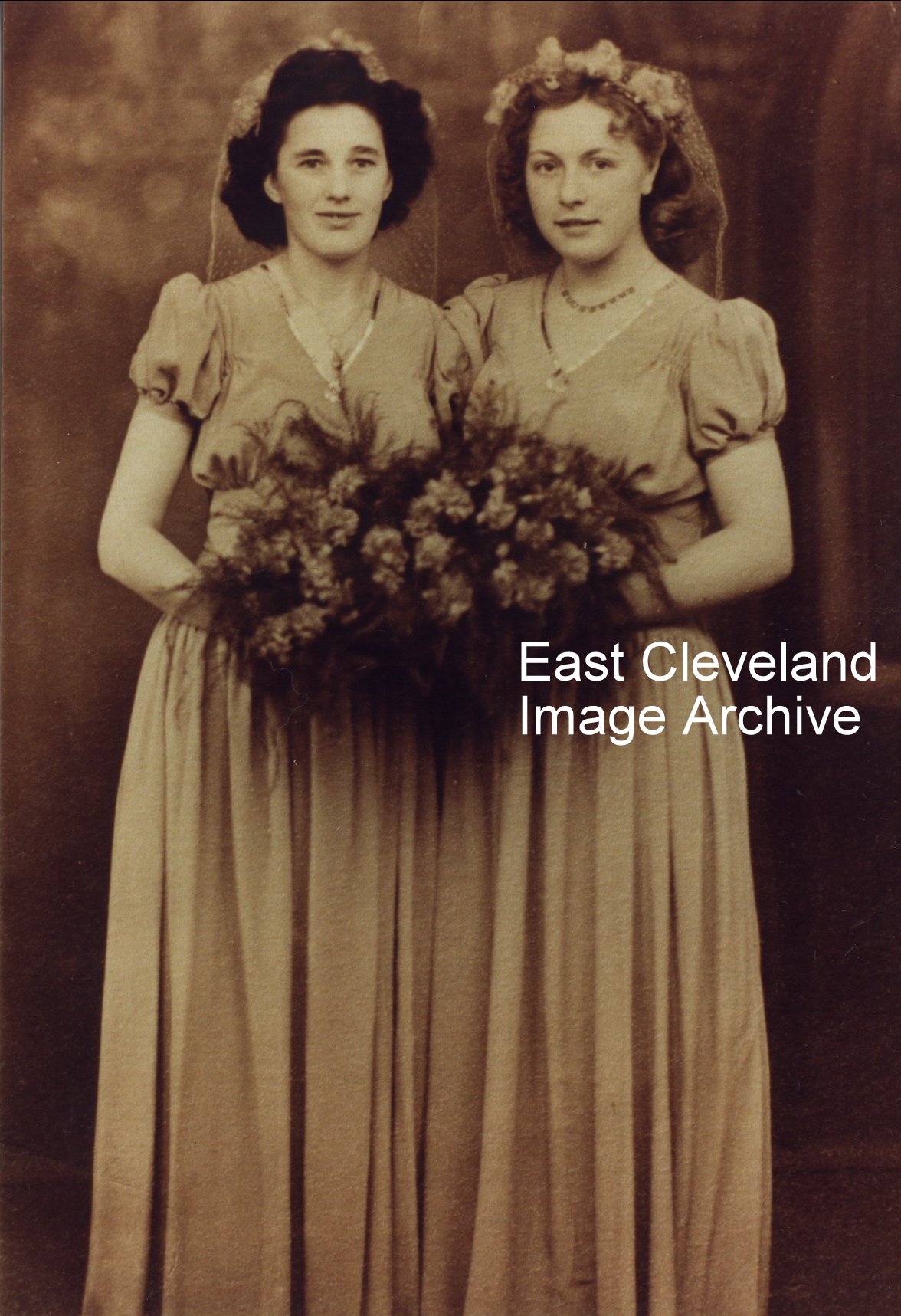
Doris (Welham) Cossey and Jean (Richardson) Forrest are the two lovely bridesmaids, but who were they bridesmaids for and when and where was the wedding? David Rigden advised: ”This is my Auntie dot. She was a “Cossey” not Rigdon. I think the wedding was probably my mum Edith. She was the Rigden”.
Many thanks to David Rigden for ensuring a correct comment.
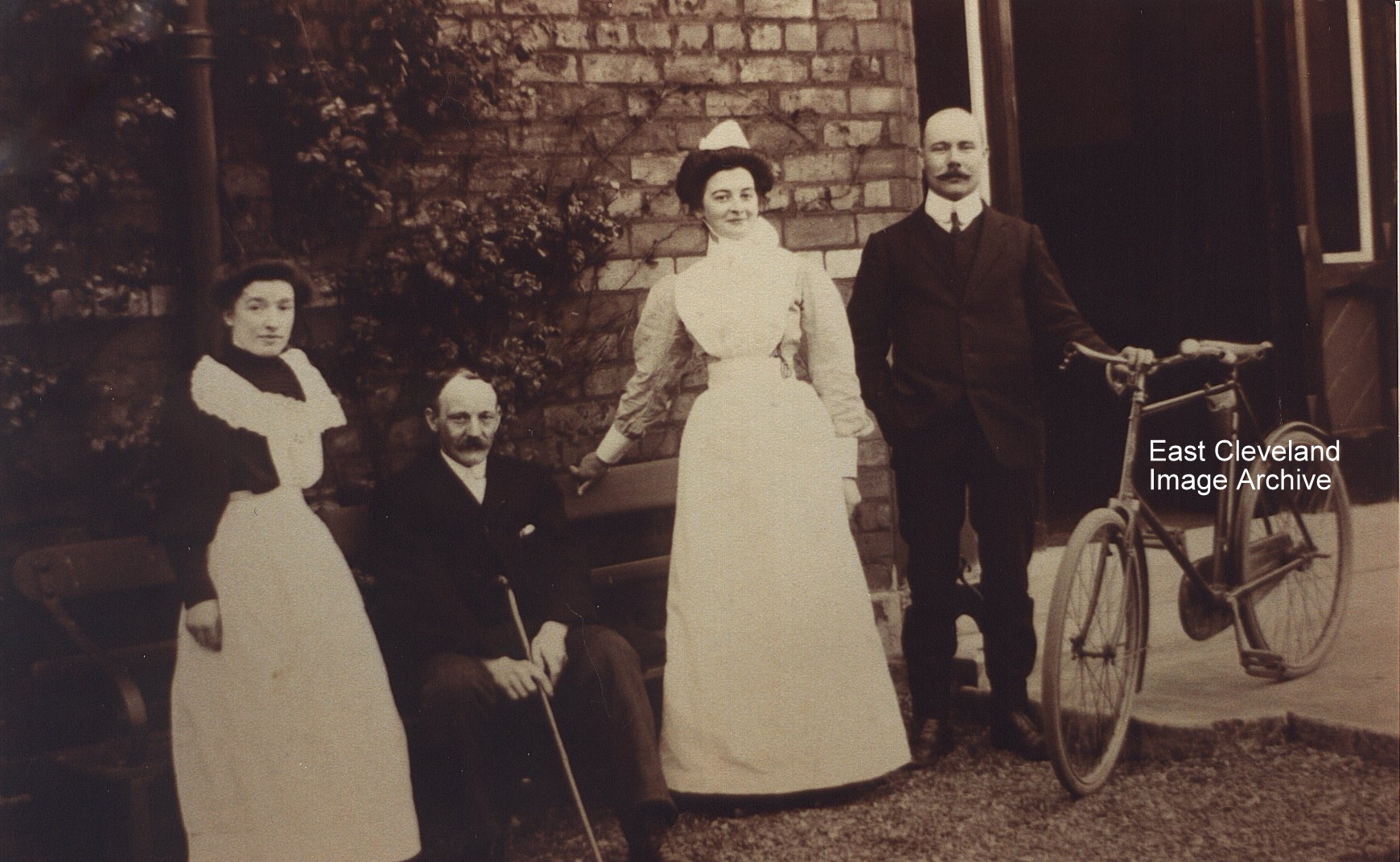
Dr Donaldson with some of his staff at the Miner’s Hospital in Skinningrove taken about 1925; the date of this photograph was written on the bottom, but does anyone know the names of the staff? Isn’t he proud of his bike? Tony Nicholson advised: “I’m interested in tracing Emily Elgey; the Matron of the Miner’s Hospital from 1902 until her death in 1924. I found several of Emily’s letters in my attic. Sadly, I don’t have a photograph of her, but I wonder if this might be her? (i.e. the nurse standing beside Dr. Donaldson). I know the photograph has ‘1925’ written on the bottom, but could it be earlier? The nurse’s uniform looks Edwardian to me, although I’m not an expert . Didn’t uniforms became less elaborate in the 1920s? Perhaps it’s wishful thinking on my part (because I want this to be Emily!) but the whole photograph has a more Edwardian feel than something from the 1920s?
Was this Dr. Donaldson the same Dr. Donaldson who was the House Surgeon at North Riding Infirmary, Middlesbrough? If so, he was born in 1876 and would have been 49 in 1925. A bit too old for the chap in the photograph, notwithstanding his baldness? Might he have come to Skinningrove to perform operations? I doubt he would have biked over in the 1920s (probably had a car) but might have done so in the Edwardian era. Needless to say, I would welcome any help in tracing Emily, and particularly a photograph of her”.
Many thanks to Tony Nicholson for the information and the Archive has suppled any information regarding Emily to assist in his researches.
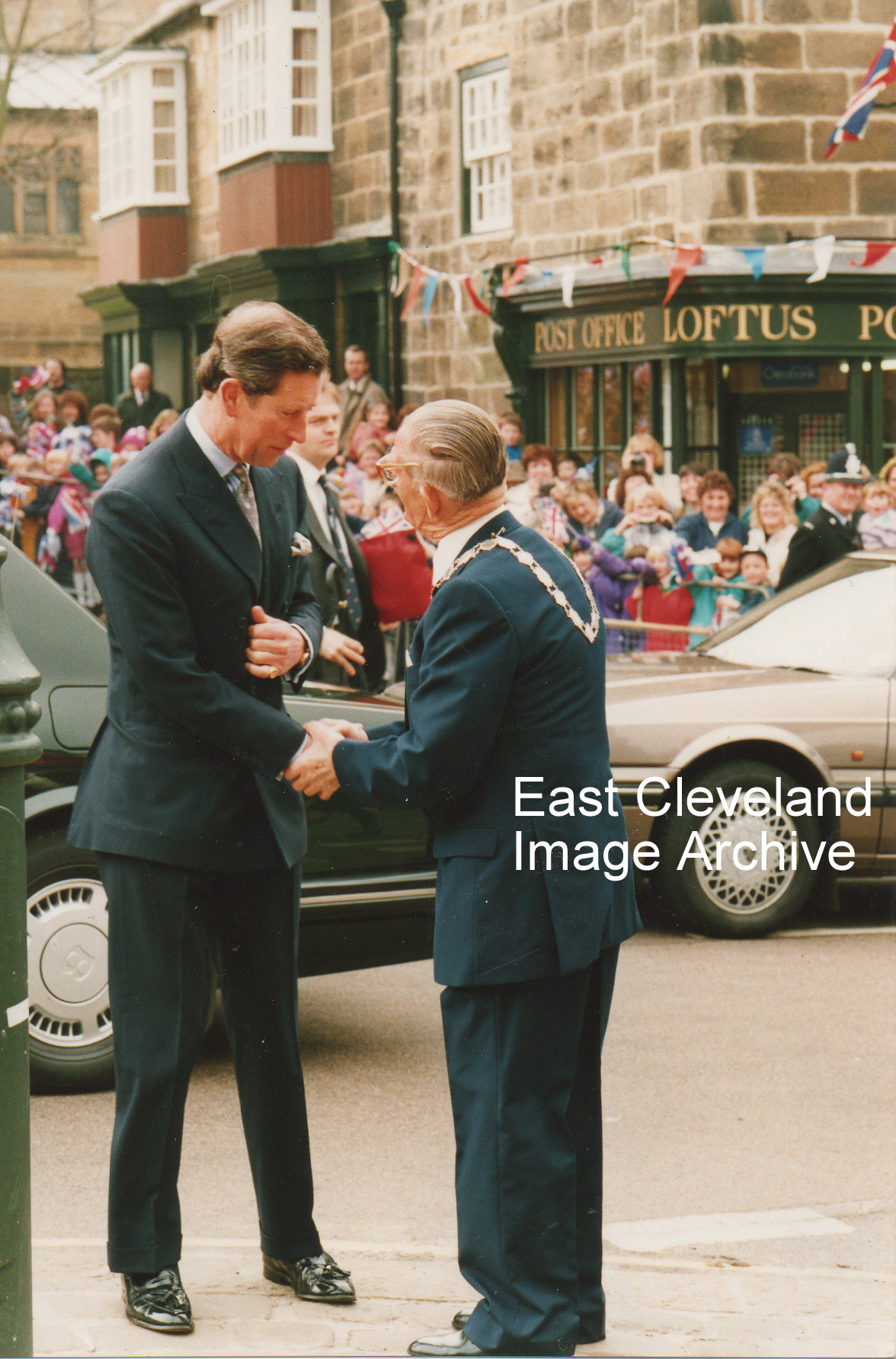
Prince Charles meeting Norman in Loftus Market Place, can anyone remember the date? Alison Atkinson suggests: “Is it from when the work replacing the old cinema with Lingberry Garth etc., was completed? In which case, the plaque in the Market Place says March 1994”.
Image courtesy of Loftus Town Council; thanks to Alison Atkinson for the update.
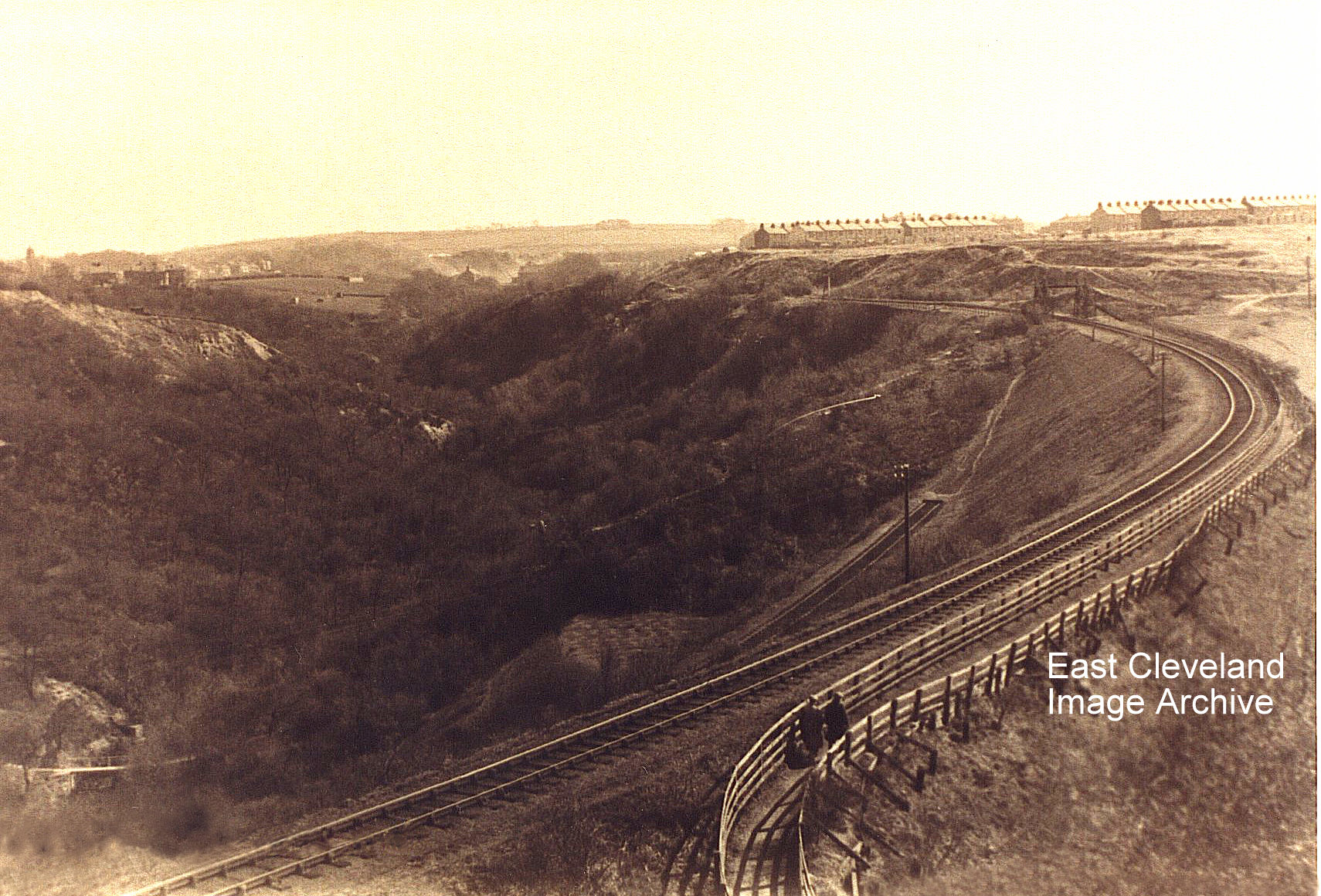
This is an image I haven’t seen before; Kilton Viaduct in its ”embanked” state. It completely alters the aspect of the valley – not for the better either unfortunately.
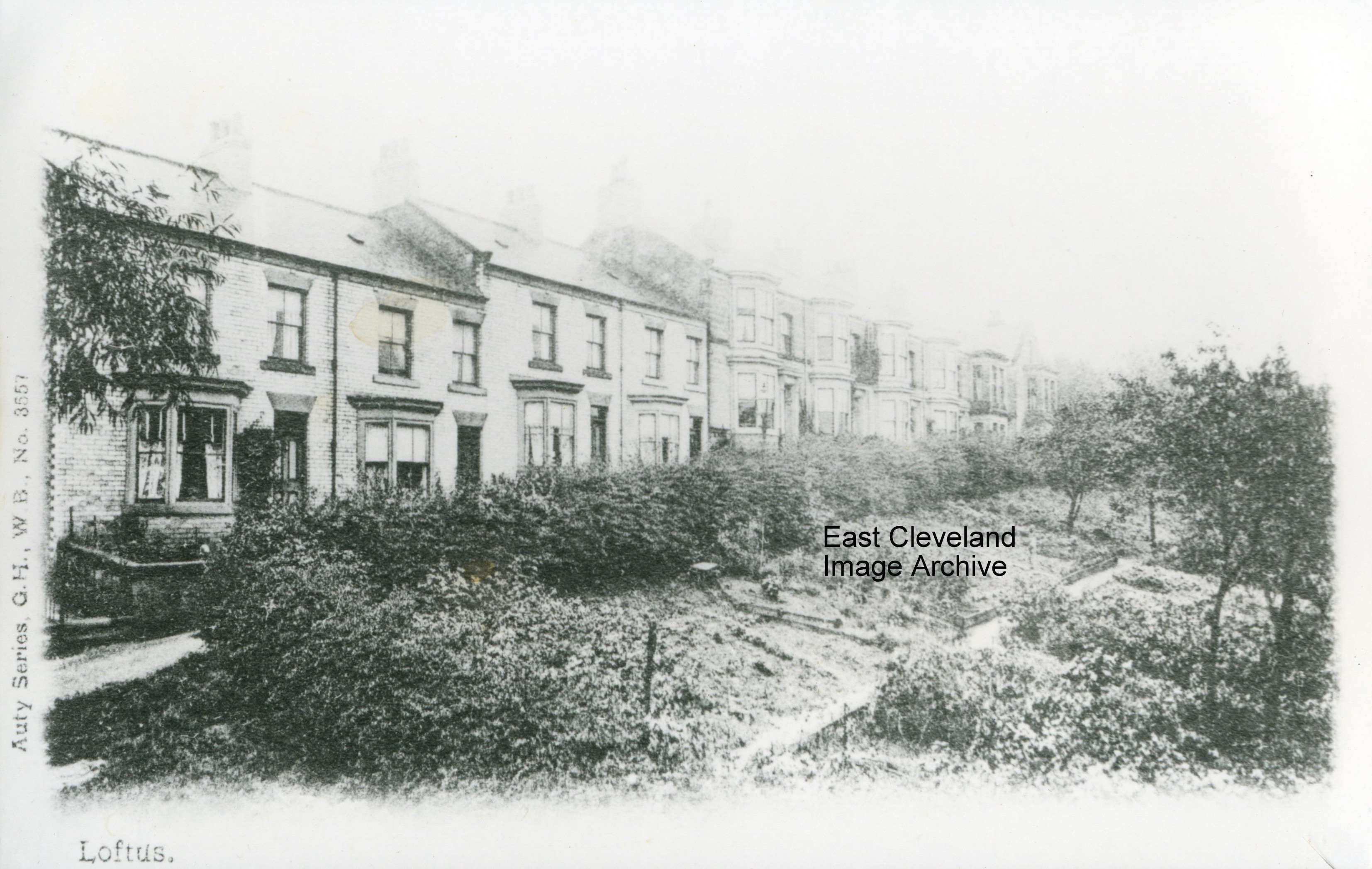
Springhead Terrace viewed from an elevated position; possibly from the property for many years occupied by the Gallilee family. Derick Pearson added: “Although the elevated viewpoint would indicate it was taken from the rear upstairs room of a house on Arlington Street. There was a photographers studio on Arlington Street for many years from the early 1900s until the 1980s”. Eric Johnson told us: “The top house on Springhead Terrace was known as the “Belgian’s house.” George Cuthbert told the Archive: ”The reason for the title ’Belgian’s house’ came from the occupation of the house during World War I by a group of Belgian refugees. At the end of World War I all but a 16-year-old girl returned to Belgium. The young lady later married the post master at Runswick Bay.”
Thanks to Eric Johnson, Derick Pearson and George Cuthbert for the updates.
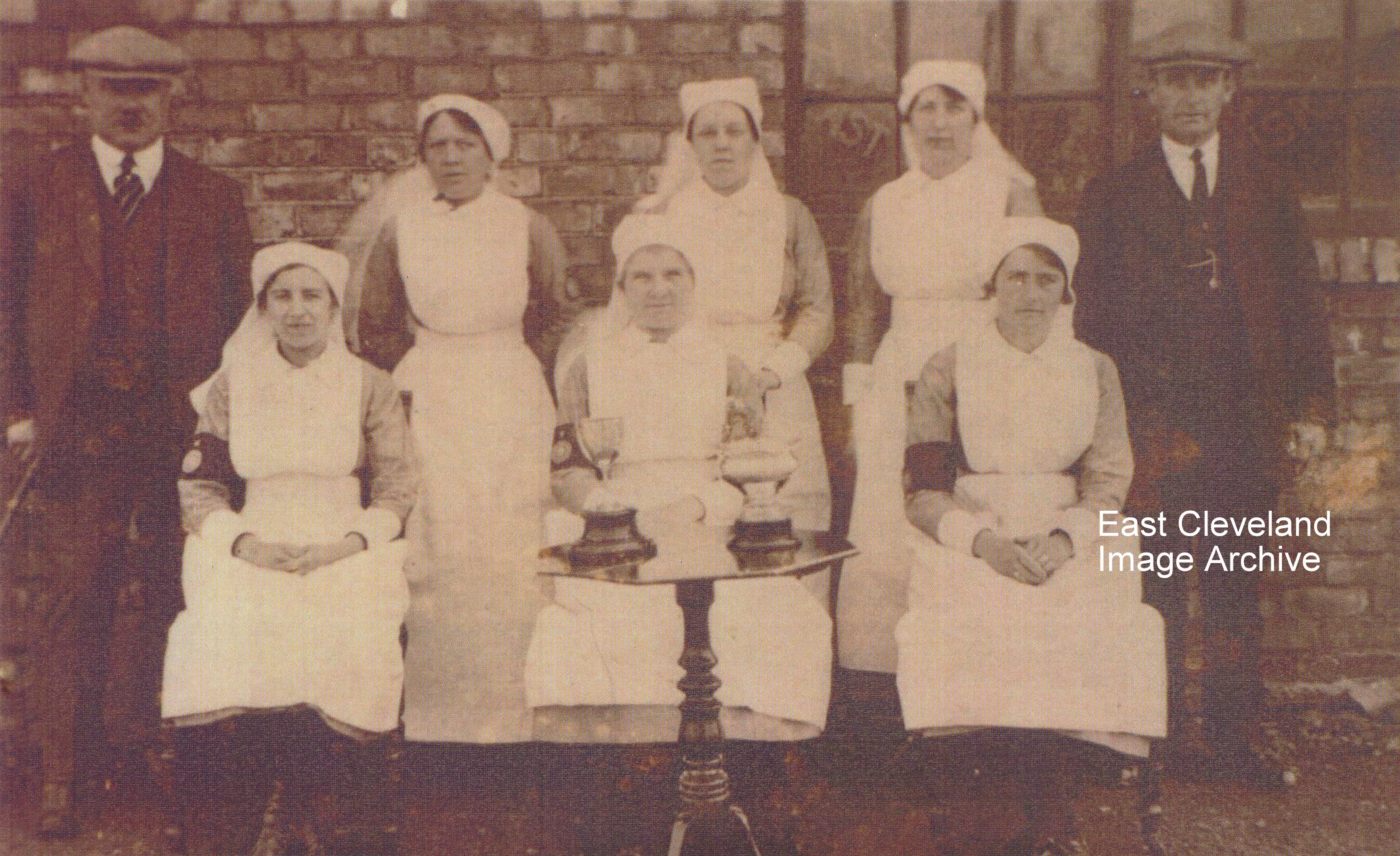
The Archive asks can anybody help in the identification of these members of the nursing staff, with Dr Donaldson and presumably a porter of the Skinningrove Hospital demolished in 1940s? Derick Pearson believe the gentleman on the left may have been Doctor Donaldson. He bears a considerable resemblance to a previous image of the nursing staff at Skinningrove.
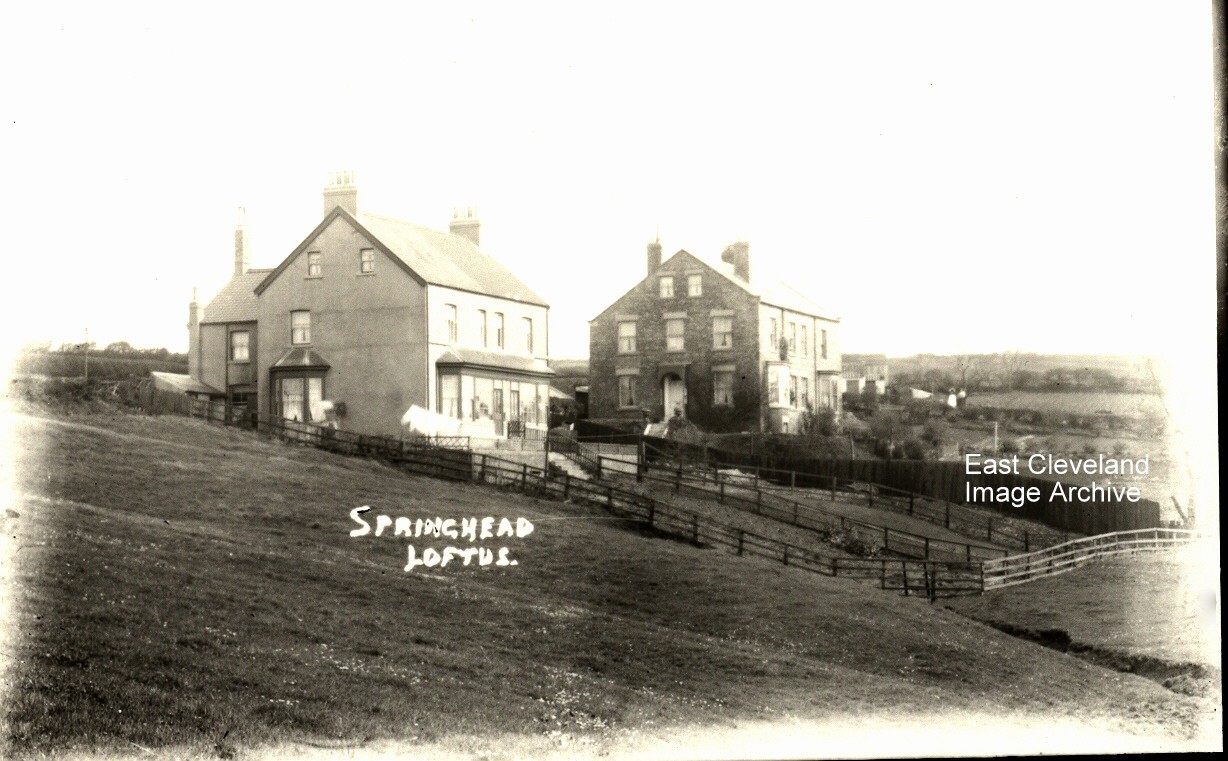
An earlier view of the houses on Micklow Lane; viewed up Springhead, Loftus. It is possibly a postcard view by T. C. Booth. Richard Watson told the Archive: “The houses in the foreground look like my mothers and the Gale’s on Micklow Lane. The side view shows a single lower ground bay window — a second floor bay was added before we moved – in about 1961. The next block up was owned by Fred Hutchinson when I was young and the Colbecks lived in the one above that”. Christopher Colbeck added: “The house in the foreground was lived in by the Watson’s and adjoining them in the 1950′ – 1960’s were the Fisher’s though before Fishers occupied it, the order of Nuns were living there (before they moved to the Convent on the main through road in Loftus). The next block: the first is ‘Springfield’ and was Fred Hutchinson’s and his two sisters who used to make funeral wreaths. Adjoining that was ‘Springrise’ later to become number 37 Micklow Lane; home to Archibald and Annie Tose. We moved there in the summer of 1958. My father Edgar Colbeck was a monumental sculptor who became the proprietor of Arrowsmiths monumental business on Zetland Road”.
Many thanks to Richard Watson and Christopher Colbeck for the updates.
Page 26 of 27« First«...1020...2324252627»
|
|










Recent Comments